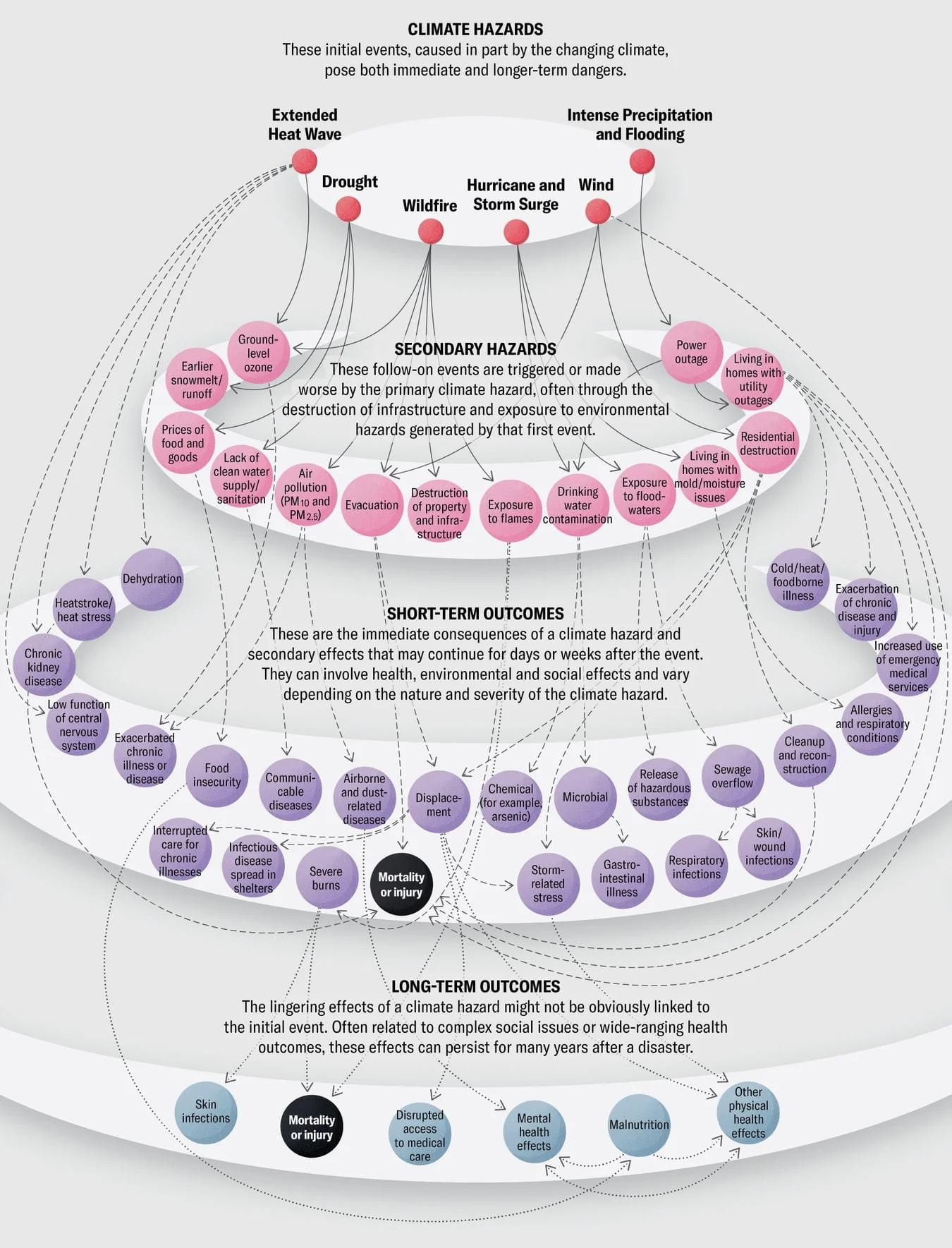Seeing the long-term effects of climate change was difficult for individuals living in the 18th and 19th centuries, during the dawn of the first industrial revolution. However, those of us living in the 21st century have first-hand experience with the numerous and devastating effects of the centuries of carbon emissions and pollution from industrial developments. Lori Youmshajekian, Master’s student at NYU studying science, health and environmental reporting, worked with Frederica Fragapane, an independent information designer with projects in the Museum of Modern Art’s permanent collection, to visualize climate disasters’ cascading effects.

The infographic reveals how climate change contributes to short- and long-term negative health outcomes. Climate hazards (such as drought, wildfires, wind, and other natural disasters) are listed on the first tier, followed by secondary hazards (including the lack of clean water, exposure to flames, and residential destruction) caused by the primary hazards, then by short-term (heatstroke, skin infections, gastrointestinal disease, the spread of communicable diseases) and long-term outcomes (mental health issues, malnutrition, injury and mortality) from the last two tiers, all cascading down in a web of cause and effect.
By Sarah Ortega
